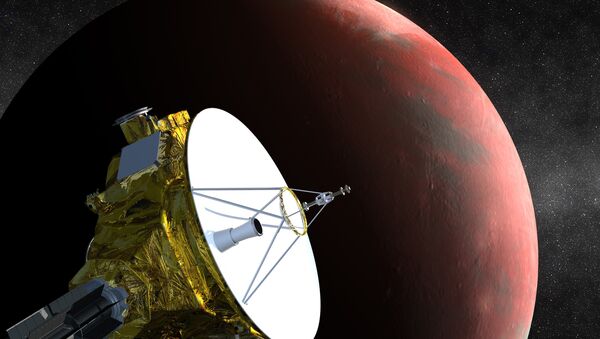"RIGHT NOW, ~1 billion miles past Pluto, @NASANewHorizons is performing the most distant spacecraft flyby ever as it zooms past #UltimaThule, an icy, ancient rock in the Kuiper Belt," NASA wrote on Twitter.
READ MORE: NASA Spacecraft to Reach Mysterious Object 4.1 Bln Miles from Earth on New Year
TALLY HO ULTIMA THULE!! An ancient relic of solar system formation, 4+ billion miles away, as dark as dirt, & shining only in the faint sunlight of the Kuiper Belt. Here it is, in a New Horizons imaging sequence. SEE IT MOVE, AGAINST THE STARS? TALLY HO! We'll be there on Monday! pic.twitter.com/EExUpK6wLt
— Alan Stern (@AlanStern) December 26, 2018
The closest approach between the probe and the asteroid occurred at 05:33 GMT. According to NASA calculations, the lowest distance between the probe and the asteroid at that time was only 3,500 kilometers (2,175 miles).
Asteroid 2014 MU69 was discovered via the Hubble orbital telescope back in 2014. In March 2018, NASA called it Ultima Thule, which means "The Edge of the World," on the basis of Internet voting. As noted by NASA, until now, researchers know very little about this space body, so they expect to learn more as a result of data obtained during the convergence.
READ MORE: NASA Thanks Russia for Prompt Crew Rescue After Soyuz Accident — Military
New Horizons, which is considered the fastest ever spacecraft ever sent to space from the Earth, was launched in January 2006. A year later, it passed Jupiter at a record close distance of 2.3 million kilometers, transmitting valuable information about the atmosphere and the magnetosphere of the planet, as well as about its satellites, to the Earth. After that, the device continued the space trip in "sleep mode" to preserve the capabilities of the equipment installed on it.


